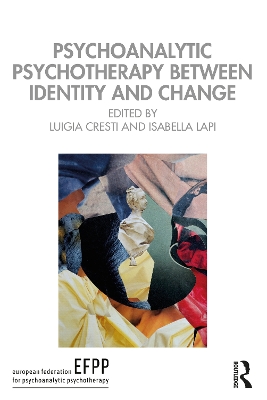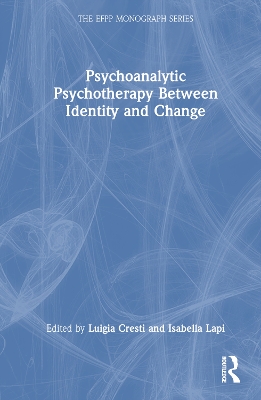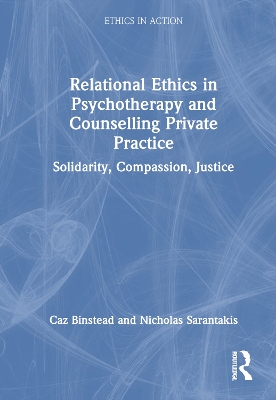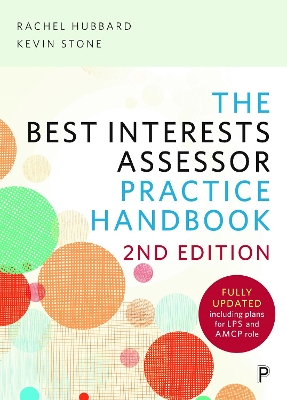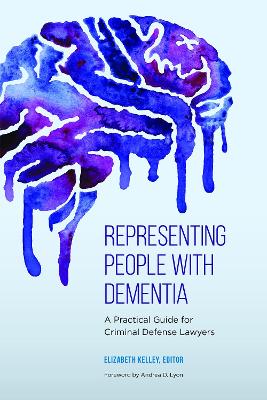Testifying in Court
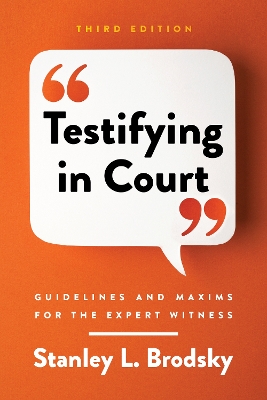 portes grátis
portes grátis
Testifying in Court
Guidelines and Maxims for the Expert Witness
Brodsky, Stanley L.
American Psychological Association
11/2022
299
Mole
Inglês
9781433836329
15 a 20 dias
Descrição não disponível.
Acknowledgments
Introduction: More Ways to Maxim-ize Your Testimony
I. PRIOR TO TESTIMONY
1. Beginning to Think and Act Like an Expert Witness
2. Cherry-Picking
3. Courtroom as Place Identity
4. Culture and Diversity in Forensic Work
5. Flawed Collateral and Assessment Data
6. Intimidation Before Testimony
7. Preparation on the Go
8. Psychotherapists in Court: To Testify or Not to Testify
9. Report Matters
10. Socializing With Attorneys and Other Parties
11. Staying Current
12. To Be an Expert
13. Uninvolved and Inept Attorneys
14. Virtual Testimony
15. What to Wear
II. THE SKILLED WITNESS
16. Burden of Proof and Degree of Certainty
17. Changing Your Mind
18. Fooled by the Face
19. The Learned Treatise 1: Writings of Authorities
20. The Learned Treatise 2: What You Have Written
21. Listening Well
22. The Rumpelstiltskin Principle
23. Saying "I Don't Know" Versus Waffling
24. Using Quiet Times
25. When the Expert Is Not Allowed to Answer
26. Wit-Free Testimony
III. OBJECTIVITY CHALLENGES
27. Allegiance Effects
28. Hired Guns
29. Professional Witnesses and Professionalism
IV. DIRECT EXAMINATION
30. Beginnings: The Good Direct Examination
31. Brushed-Off Direct Examination
32. Diverging on Direct Examination
33. The Language of Testimony
V. CROSS-EXAMINATION
34. Abrasive and Attacking Cross-Examinations
35. The Abysmal History Gambit
36. The Admit-Deny Response
37. Challenges to Experience 1: Insufficient Experience
38. Challenges to Experience 2: Case-Specific Experience
39. Challenges to Experience 3: The Case Against Experience
40. Credentialing and Qualifications: Common Challenges
41. Disaster Relief
42. DSM-5: The Cautionary Statement
43. The Expert Gaze
44. Looking at the Jury
45. Negative Assertions
46. Perspective Taking
47. Power and Control on the Witness Stand
48. Probes for Guilt and Shame
49. The Push-Pull Technique
50. Set-Ups and Takedowns
51. Surprise Questions
52. Theatrical and Outlandish Attorneys
53. Transformative Moments
54. Vigorous Cross-Examinations, Vigorous Answers
55. Your Expertise Used Against You
VI. WHAT NOT TO DO
56. Feisty Experts
57. Frittering Away Trustworthiness
58. Humor
59. Implicit Vouching and Winking at the Jury
60. The Lateral Arabesque
61. Meandering Expertise
62. Narcissistic Experts
63. Predictable Answers
64. Recalcitrant and Unprepared: The Case for Consultation
65. Testifying While Sick or Under the Influence
66. Traumatic Experiences on the Stand
67. Worst Expert Testimony Ever
VII. AFTER YOUR TESTIMONY
68. Fugue State Testimony
69. Moving On
70. When It Is Over
Appendix: Maxims for Quick Review
References
Index
About the Author
Introduction: More Ways to Maxim-ize Your Testimony
I. PRIOR TO TESTIMONY
1. Beginning to Think and Act Like an Expert Witness
2. Cherry-Picking
3. Courtroom as Place Identity
4. Culture and Diversity in Forensic Work
5. Flawed Collateral and Assessment Data
6. Intimidation Before Testimony
7. Preparation on the Go
8. Psychotherapists in Court: To Testify or Not to Testify
9. Report Matters
10. Socializing With Attorneys and Other Parties
11. Staying Current
12. To Be an Expert
13. Uninvolved and Inept Attorneys
14. Virtual Testimony
15. What to Wear
II. THE SKILLED WITNESS
16. Burden of Proof and Degree of Certainty
17. Changing Your Mind
18. Fooled by the Face
19. The Learned Treatise 1: Writings of Authorities
20. The Learned Treatise 2: What You Have Written
21. Listening Well
22. The Rumpelstiltskin Principle
23. Saying "I Don't Know" Versus Waffling
24. Using Quiet Times
25. When the Expert Is Not Allowed to Answer
26. Wit-Free Testimony
III. OBJECTIVITY CHALLENGES
27. Allegiance Effects
28. Hired Guns
29. Professional Witnesses and Professionalism
IV. DIRECT EXAMINATION
30. Beginnings: The Good Direct Examination
31. Brushed-Off Direct Examination
32. Diverging on Direct Examination
33. The Language of Testimony
V. CROSS-EXAMINATION
34. Abrasive and Attacking Cross-Examinations
35. The Abysmal History Gambit
36. The Admit-Deny Response
37. Challenges to Experience 1: Insufficient Experience
38. Challenges to Experience 2: Case-Specific Experience
39. Challenges to Experience 3: The Case Against Experience
40. Credentialing and Qualifications: Common Challenges
41. Disaster Relief
42. DSM-5: The Cautionary Statement
43. The Expert Gaze
44. Looking at the Jury
45. Negative Assertions
46. Perspective Taking
47. Power and Control on the Witness Stand
48. Probes for Guilt and Shame
49. The Push-Pull Technique
50. Set-Ups and Takedowns
51. Surprise Questions
52. Theatrical and Outlandish Attorneys
53. Transformative Moments
54. Vigorous Cross-Examinations, Vigorous Answers
55. Your Expertise Used Against You
VI. WHAT NOT TO DO
56. Feisty Experts
57. Frittering Away Trustworthiness
58. Humor
59. Implicit Vouching and Winking at the Jury
60. The Lateral Arabesque
61. Meandering Expertise
62. Narcissistic Experts
63. Predictable Answers
64. Recalcitrant and Unprepared: The Case for Consultation
65. Testifying While Sick or Under the Influence
66. Traumatic Experiences on the Stand
67. Worst Expert Testimony Ever
VII. AFTER YOUR TESTIMONY
68. Fugue State Testimony
69. Moving On
70. When It Is Over
Appendix: Maxims for Quick Review
References
Index
About the Author
Este título pertence ao(s) assunto(s) indicados(s). Para ver outros títulos clique no assunto desejado.
testifying in court; testifying; court; court case; court trial; courtroom behavior; courtroom etiquette; court testimony; expert witness; expert witness testimony; recommendations for expert witnesses; testimony; expert testimony; direct examination; cross-examination; forensic psychology; legal system; forensic psychiatry; forensic social work; expert expert witness; psychology and law
Acknowledgments
Introduction: More Ways to Maxim-ize Your Testimony
I. PRIOR TO TESTIMONY
1. Beginning to Think and Act Like an Expert Witness
2. Cherry-Picking
3. Courtroom as Place Identity
4. Culture and Diversity in Forensic Work
5. Flawed Collateral and Assessment Data
6. Intimidation Before Testimony
7. Preparation on the Go
8. Psychotherapists in Court: To Testify or Not to Testify
9. Report Matters
10. Socializing With Attorneys and Other Parties
11. Staying Current
12. To Be an Expert
13. Uninvolved and Inept Attorneys
14. Virtual Testimony
15. What to Wear
II. THE SKILLED WITNESS
16. Burden of Proof and Degree of Certainty
17. Changing Your Mind
18. Fooled by the Face
19. The Learned Treatise 1: Writings of Authorities
20. The Learned Treatise 2: What You Have Written
21. Listening Well
22. The Rumpelstiltskin Principle
23. Saying "I Don't Know" Versus Waffling
24. Using Quiet Times
25. When the Expert Is Not Allowed to Answer
26. Wit-Free Testimony
III. OBJECTIVITY CHALLENGES
27. Allegiance Effects
28. Hired Guns
29. Professional Witnesses and Professionalism
IV. DIRECT EXAMINATION
30. Beginnings: The Good Direct Examination
31. Brushed-Off Direct Examination
32. Diverging on Direct Examination
33. The Language of Testimony
V. CROSS-EXAMINATION
34. Abrasive and Attacking Cross-Examinations
35. The Abysmal History Gambit
36. The Admit-Deny Response
37. Challenges to Experience 1: Insufficient Experience
38. Challenges to Experience 2: Case-Specific Experience
39. Challenges to Experience 3: The Case Against Experience
40. Credentialing and Qualifications: Common Challenges
41. Disaster Relief
42. DSM-5: The Cautionary Statement
43. The Expert Gaze
44. Looking at the Jury
45. Negative Assertions
46. Perspective Taking
47. Power and Control on the Witness Stand
48. Probes for Guilt and Shame
49. The Push-Pull Technique
50. Set-Ups and Takedowns
51. Surprise Questions
52. Theatrical and Outlandish Attorneys
53. Transformative Moments
54. Vigorous Cross-Examinations, Vigorous Answers
55. Your Expertise Used Against You
VI. WHAT NOT TO DO
56. Feisty Experts
57. Frittering Away Trustworthiness
58. Humor
59. Implicit Vouching and Winking at the Jury
60. The Lateral Arabesque
61. Meandering Expertise
62. Narcissistic Experts
63. Predictable Answers
64. Recalcitrant and Unprepared: The Case for Consultation
65. Testifying While Sick or Under the Influence
66. Traumatic Experiences on the Stand
67. Worst Expert Testimony Ever
VII. AFTER YOUR TESTIMONY
68. Fugue State Testimony
69. Moving On
70. When It Is Over
Appendix: Maxims for Quick Review
References
Index
About the Author
Introduction: More Ways to Maxim-ize Your Testimony
I. PRIOR TO TESTIMONY
1. Beginning to Think and Act Like an Expert Witness
2. Cherry-Picking
3. Courtroom as Place Identity
4. Culture and Diversity in Forensic Work
5. Flawed Collateral and Assessment Data
6. Intimidation Before Testimony
7. Preparation on the Go
8. Psychotherapists in Court: To Testify or Not to Testify
9. Report Matters
10. Socializing With Attorneys and Other Parties
11. Staying Current
12. To Be an Expert
13. Uninvolved and Inept Attorneys
14. Virtual Testimony
15. What to Wear
II. THE SKILLED WITNESS
16. Burden of Proof and Degree of Certainty
17. Changing Your Mind
18. Fooled by the Face
19. The Learned Treatise 1: Writings of Authorities
20. The Learned Treatise 2: What You Have Written
21. Listening Well
22. The Rumpelstiltskin Principle
23. Saying "I Don't Know" Versus Waffling
24. Using Quiet Times
25. When the Expert Is Not Allowed to Answer
26. Wit-Free Testimony
III. OBJECTIVITY CHALLENGES
27. Allegiance Effects
28. Hired Guns
29. Professional Witnesses and Professionalism
IV. DIRECT EXAMINATION
30. Beginnings: The Good Direct Examination
31. Brushed-Off Direct Examination
32. Diverging on Direct Examination
33. The Language of Testimony
V. CROSS-EXAMINATION
34. Abrasive and Attacking Cross-Examinations
35. The Abysmal History Gambit
36. The Admit-Deny Response
37. Challenges to Experience 1: Insufficient Experience
38. Challenges to Experience 2: Case-Specific Experience
39. Challenges to Experience 3: The Case Against Experience
40. Credentialing and Qualifications: Common Challenges
41. Disaster Relief
42. DSM-5: The Cautionary Statement
43. The Expert Gaze
44. Looking at the Jury
45. Negative Assertions
46. Perspective Taking
47. Power and Control on the Witness Stand
48. Probes for Guilt and Shame
49. The Push-Pull Technique
50. Set-Ups and Takedowns
51. Surprise Questions
52. Theatrical and Outlandish Attorneys
53. Transformative Moments
54. Vigorous Cross-Examinations, Vigorous Answers
55. Your Expertise Used Against You
VI. WHAT NOT TO DO
56. Feisty Experts
57. Frittering Away Trustworthiness
58. Humor
59. Implicit Vouching and Winking at the Jury
60. The Lateral Arabesque
61. Meandering Expertise
62. Narcissistic Experts
63. Predictable Answers
64. Recalcitrant and Unprepared: The Case for Consultation
65. Testifying While Sick or Under the Influence
66. Traumatic Experiences on the Stand
67. Worst Expert Testimony Ever
VII. AFTER YOUR TESTIMONY
68. Fugue State Testimony
69. Moving On
70. When It Is Over
Appendix: Maxims for Quick Review
References
Index
About the Author
Este título pertence ao(s) assunto(s) indicados(s). Para ver outros títulos clique no assunto desejado.
testifying in court; testifying; court; court case; court trial; courtroom behavior; courtroom etiquette; court testimony; expert witness; expert witness testimony; recommendations for expert witnesses; testimony; expert testimony; direct examination; cross-examination; forensic psychology; legal system; forensic psychiatry; forensic social work; expert expert witness; psychology and law

